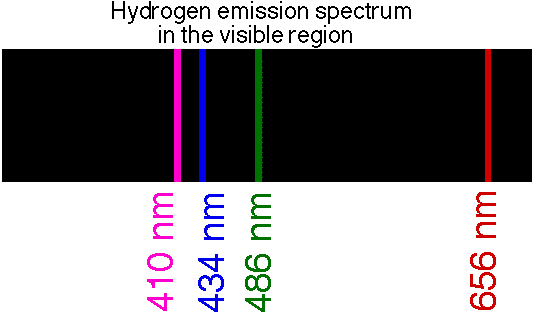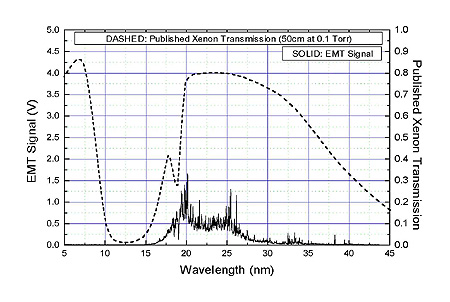

To visualize these different spans of waves, scientists came up with the Electromagnetic Spectrum.Įlectromagnetic Radiation is EMF radiation, or EMR. When the energy of a wave increases, the frequency also increases and the wavelength decreases. Wavelength describes the distance over which the wave shape repeats, and this repetition is the frequency. These waves are all categorized by least powerful to most powerful, depending on their energy (E), wavelength (λ), and frequency (f). When photons move together, they do so in waves. Photons can travel alone or move around together in synchrony. Radiant Energy is made up of small packets of particles, called photons. Simply defined, radiation is a process by which energy particles or waves travel though space. Radiation is everywhere and in everything that gives off energy. This energy traveling through space is called radiation.
ATOMIC EMISSION SPECTRUM SCARF FULL
The Paschen series is made up of the transitions to the 3-level, but they are omitted to avoid cluttering the diagram.The Electromagnetic Spectrum refers to the full range of all possible Electromagnetic Field energy frequencies. These energy gaps are all much smaller than in the Lyman series, and so the frequencies produced are also much lower. If the same is done for the 2-level, the Balmer series is shown. The spacings between the lines in the spectrum reflect the changes in spacings between the energy levels. If an electron falls from the 6-level, the difference is slightly less than before, and so the frequency is slightly lower (because of the scale of the diagram, it is impossible to depict the levels beyond 7).Īll other possible jumps to the first level make up the whole Lyman series. The next few diagrams are in two parts, with the energy levels at the top and the spectrum at the bottom. (The significance of the infinity level will be made clear later.) The greatest fall will be from the infinity level to the 1-level. The greatest possible fall in energy will therefore produce the highest frequency line in the spectrum. The last equation can therefore be rewritten as a measure of the energy gap between two electron levels: That energy must be exactly the same as the energy gap between the 3-level and the 2-level in the hydrogen atom. From the frequency of the red light, its energy can be calculated.

This is the origin of the red line in the hydrogen spectrum. If an electron falls from the 3-level to the 2-level, red light is seen. The higher the frequency, the higher the energy of the light. Each frequency of light is associated with a particular energy by the equation: That energy which the electron loses is emitted as light (which "light" includes UV and IR as well as visible radiation). If an electron falls from the 3-level to the 2-level, it must lose an amount of energy exactly equal to the energy difference between those two levels. It could fall all the way back down to the first level again, or it could fall back to the second level and then, in a second jump, down to the first level.Īssigning particular electron jumps to individual lines in the spectrum It would tend to lose energy again by falling back down to a lower level. Suppose a particular electron is excited into the third energy level. Hydrogen molecules are first broken up into hydrogen atoms (hence the atomic hydrogen emission spectrum) and electrons are then promoted into higher energy levels. The high voltage in a discharge tube provides that energy. But if energy is supplied to the atom, the electron is excited into a higher energy level, or even removed from the atom altogether. When unexcited, hydrogen's electron is in the first energy level-the level closest to the nucleus. Why does hydrogen emit light when excited by a high voltage and what is the significance of those whole numbers? Each line can be calculated from a combination of simple whole numbers. The lines in the hydrogen emission spectrum form regular patterns and can be represented by a (relatively) simple equation. The origin of the hydrogen emission spectrum

The various combinations of numbers that can be substituted into this formula allow the calculation the wavelength of any of the lines in the hydrogen emission spectrum there is close agreement between the wavelengths generated by this formula and those observed in a real spectrum.Ī modified version of the Rydberg equation can be used to calculate the frequency of each of the lines: In other words, if \(n_1\) is, say, 2 then \(n_2\) can be any whole number between 3 and infinity. \(n_1\) and \(n_2\) are integers (whole numbers).


 0 kommentar(er)
0 kommentar(er)
